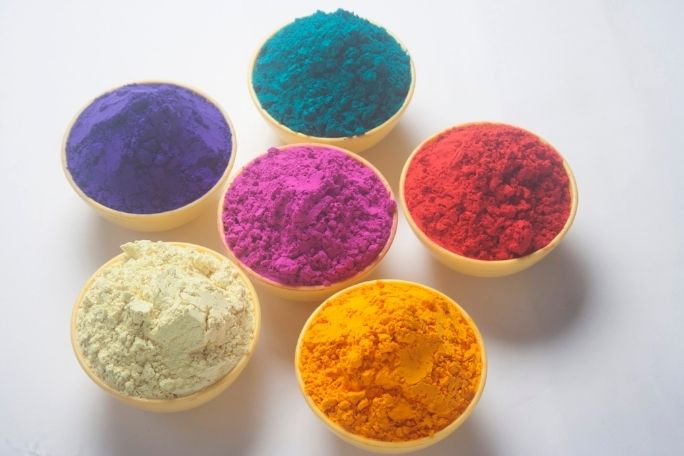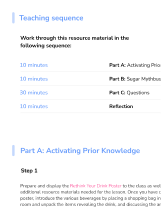Lesson summary
This is a STEAM lesson, which adds the Arts to STEM (Science, Technology, Engineering and Mathematics). To find out more about STEAM and STEM, click here.
In this lesson, students will develop cultural understanding by exploring the Diwali celebration of India and the custom of rangoli art. Rangoli is a traditional art form in which pictures are drawn with materials such as coloured rice, flour or sand. They are made in the entrances of homes and are believed to promote health and wellbeing. The designs are generally symmetrical in nature and include vibrant colours. The presence of symmetry in rangoli designs allows students to link their exploration of visual art and culture to mathematical concepts as they respond to and create their own designs.
Learning intentions:
Students will...
- be aware of the diversity of culture in our world
- apply a range of techniques from different cultures and times to create works of art.
Success criteria:
Students can...
- explain key aspects of the Indian Diwali festival
- explain features of rangoli designs
- apply techniques to create lines using sand
- apply techniques to fill spaces with colour
- identify symmetry in designs.
Lesson details
Curriculum mapping
We encourage you to teach STEAM both through and between disciplines (transdisciplinary).
This lesson could be used across various strands of the curriculum, including Design and Technologies, Maths and Visual Arts. Consider focusing on a curriculum strand that will complement other areas of learning you and your students are working on.
Syllabus outcomes: VAS2.1, VAS2.2, VAS2.3, VAS2.4, MA2‑1WM, MA2‑2WM, MA2‑3WM, MA2-15MG
General capabilities: Literacy, Numeracy, Intercultural Understanding, Critical and Creative Thinking.
Cross-curriculum priority: Sustainability
Relevant parts of Year 3 Mathematics Achievement Standards: Students extend and use single-digit addition and related subtraction facts and apply additive strategies to model and solve problems involving two- and three-digit numbers. Students represent unit fractions and their multiples in different ways. Students use familiar metric units when estimating, comparing and measuring the attributes of objects and events.
Relevant parts of Year 4 Mathematics Achievement Standards: Students recognise equivalent fractions and make connections between fraction and decimal notations. Students count and represent fractions on a number line. They represent and approximate shapes and objects in the environment.
Relevant parts of Year 3 and 4 Visual Arts Achievement Standards: Students describe the use of visual conventions, visual arts processes and materials in artworks they create and/or experience. They describe where, why and/or how visual artists create and/or display artworks across cultures, times, places and/or other contexts. Students use visual conventions, visual arts processes and materials to create artworks that communicate ideas, perspectives and/or meaning.
Relevant parts of Year 3 and 4 Design and Technologies Achievement Standards: They communicate design ideas using models and drawings including annotations and symbols. Students plan and sequence steps and use technologies and techniques to safely produce designed solutions.
Unit of work: Learning Through Art & Craft – Primary
Time required: 120 mins
Level of teacher scaffolding: Medium – students will likely require support to develop the techniques needed to draw lines and fill spaces with sand.
Resources required
- Bangles (various sizes to share)
- Coloured sand and Natural sand (watch this clip to see how to create coloured sand using natural sand and powdered paint)
- Combs (various, for students to share), forks, cotton buds, teaspoons and matchsticks (one per student)
- Device capable of displaying video
- Device capable of photographing student designs
- Glitter shakers (around one per three students)
- Portable digital devices (at least one per pair)
- Student Worksheet (one per student)
Skills
This lesson is designed to build students’ competencies in the following skills:
- Collaboration
- Communication
- Creativity
- Critical thinking
- Cultural understanding
- Empathy
- Social skills
Additional info
STEAM Education:
Over recent years, the importance of STEM has been heavily promoted and discussed within fields of education. This has been within the context of ensuring that the next generation of students are provided with relevant knowledge and skills for the 21st century. STEM acknowledges the importance of the interrelated nature of science, technology, engineering and mathematics and the prominence of these skills in a world of continuous technological advancement.
What was missing from this original acronym, however, was an acknowledgement of the vital importance of artistic and creative thinking. The ability to think outside the box to develop artistic and creative solutions.
The relevance of art is integral to success in all of the original STEM areas, and so STEAM education is now moving to the forefront. Significant figures in science and technological advancement (notably Leonardo DaVinci, Albert Einstein and Steve Jobs) valued and applied the contribution of artistic skill into their work and art, design and creativity is also pivotal to success in industries such as marketing, advertising and promotion.
This is an original Cool+ lesson.


Welcome back!
Don't have an account yet?
Log in with:
Create your free Cool.org account.
Many of our resources are free, with an option to upgrade to Cool+ for premium content.
Already have an account?
Sign up with:
By signing up you accept Cool.org's Terms and Conditions(Opens in new tab) and Privacy Policy(Opens in new tab).